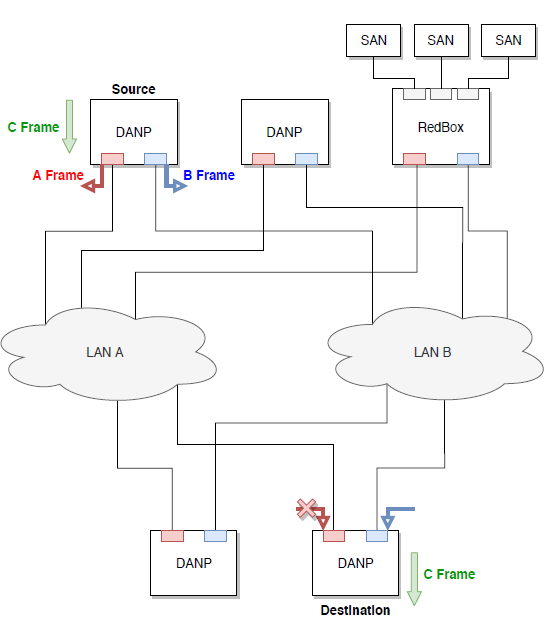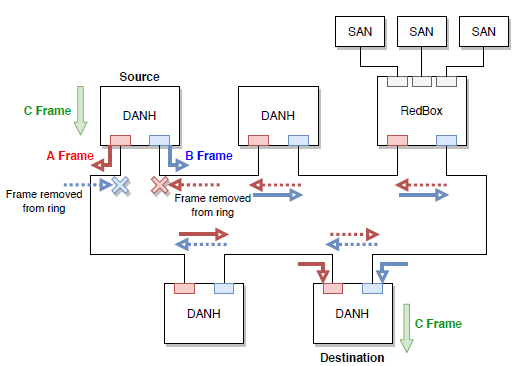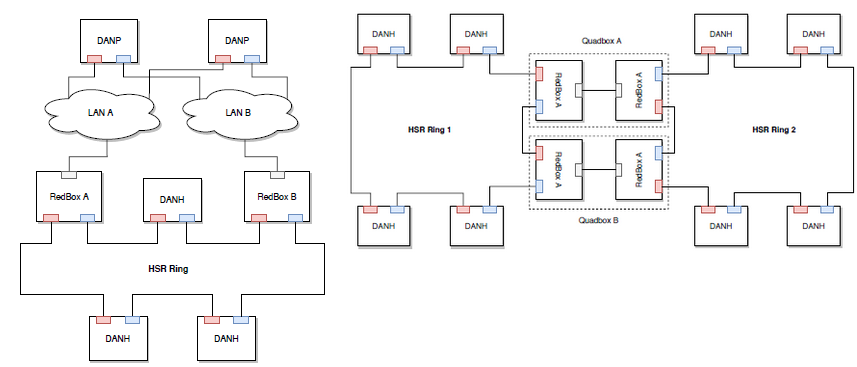Communication networks, and Ethernet networks in particular, have been expanded into other fields, besides the office informatics. One of their latest conquests has been industrial automation networks in substations. The IEC 61850-90-4 establishes the communication networks and systems in power utility automation. This standard proposes Ethernet with PRP and HSR protocols, defined in the IEC 62439-3, as a global standard to use in the Bus Station and Process Bus in substations.
These protocols have a zero recovery time, meaning that once there is a network failure, communication is not stopped and there is no frame loss. This allows connecting and disconnecting devices without having to stop the operation process of the network and other devices.
 The importance of recovery times in the event of a link loss is considered critical in certain industrial systems. Traditional protocols act by recalculating the entire path when a link failure happens; however, the recovery algorithms of HSR and PRP protocols are transparent to the upper layers.
The importance of recovery times in the event of a link loss is considered critical in certain industrial systems. Traditional protocols act by recalculating the entire path when a link failure happens; however, the recovery algorithms of HSR and PRP protocols are transparent to the upper layers.
Traditional protocols like Rapid Spanning Tree Protocol (RSTP) may not be enough for some applications, as RSTP normally offers a 500ms response time. This is where the 62439-3 standard comes into play, defining the HSR and PRP protocols to meet the needs of certain critical systems. These protocols have several applications in critical systems such as: protection systems, industrial robot control or electrical substations.
PRP
PRP is a protocol to ensure high availability and reduce the network recovery time and therefore the transmission time to “zero”. This protocol is based on using two independent networks at all levels, LAN A and LAN B, and sending the same message at the same time on both networks.
One of the major advantages of this protocol is that the use of the protocol is transparent for the network, so that devices that use PRP as well as those that do not, can communicate with each other. Considering this characteristic of the PRP protocol, we can find two types of devices:
- DANP (Double Attached Node implementing PRP): a device where redundancy is implemented.
- SAN (Single Attached Node): a device without redundancy.

DANP is used to connect fi eld devices to a redundant network. RedBox is a device that connects standard Ethernet devices (SANs) to a redundant network. Non-PRP (SAN) devices are also allowed to connect to redundant LAN A and LAN B directly without a RedBox.
One of the main features of this PRP protocol is that both LANs must be independent. In case of failure of one LAN, the other must be available.
HSR
HSR is a redundancy protocol, just like PRP. It ensures high availability and reduces the network recovery time and therefore the transmission time to “zero”. In this case, the network has a ring topology, and when node A wants to send a message to node B, it duplicates it and sends it in both directions of the ring. The devices in this network are called DANH (Double Attached Node implementing HSR).

HSR and PRP are layer 2 protocols, but there is a big difference between them. The difference is that HSR adds an HSR Tag to the Ethernet frame, so all devices on the ring network must be able to understand HSR.
HSR and PRP – Networks and Security
Combining PRP and HSR protocols allows us to increase two of the most important factors in the network, availability and integrity. Reducing these attack vectors to a minimum thanks to redundant protocols is a great advantage for the security of critical systems.
 At SoC-e, we have several years of experience in industrial networks and critical systems. We have different networking oriented products. In this case, we offer solutions for HSR and PRP, both at hardware and IP Core (FPGA) level.
At SoC-e, we have several years of experience in industrial networks and critical systems. We have different networking oriented products. In this case, we offer solutions for HSR and PRP, both at hardware and IP Core (FPGA) level.
